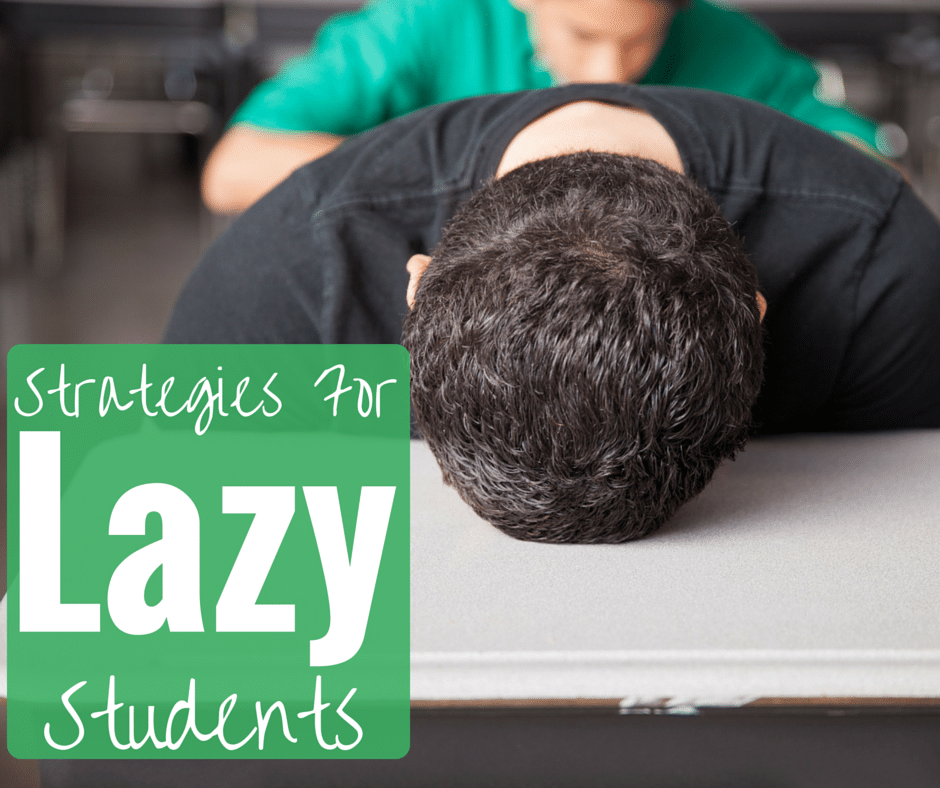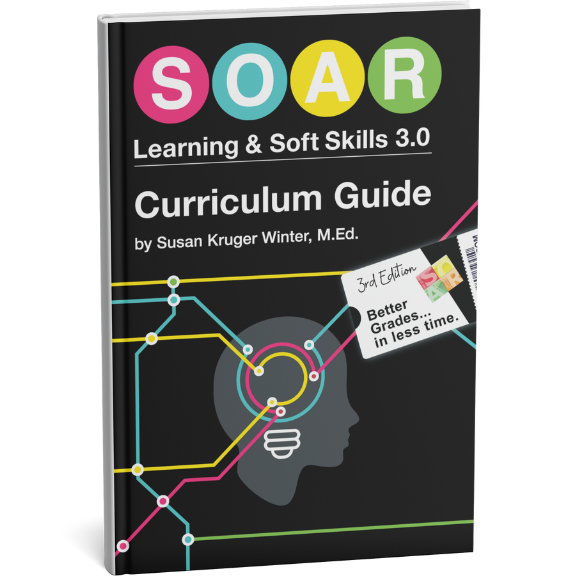Strategies For Lazy Students
What’s the difference between being lazy and being plain-old “human?” Lazy means you know what needs to be done to accomplish the objective, but consciously choose not to do it.
Being “human” means you have the will to accomplish the objective, but something inexplicably has gone wrong.

Here’s the problem… To the casual observer, there is no apparent difference between being lazy and being human. So, how can you tell the difference?
Let’s explore a few student situations:
STUDENT: Tom was at his locker. He was in a rush. He was rushed to get to class. He was rushed to get to lunch. He was rushed to get out the door and on the bus. When Tom sits down to do his homework later that night, he doesn’t have his science textbook nor his math notebook.
Is Tom lazy when it comes to his organization skills, or is he overwhelmed because he is “human?”
STUDENT: Paper management for students is complex. The process usually involves rifling through their book bag. They dig through a sea of 12-16 different folders and notebooks (not to mention another half-dozen textbooks). Find the correct folder. Pull it out. Set it down. Open it up. Slide the paper in. Return the folder back into their bag. That is, if the right folder is even in their bag. It might be camouflaged with their other books in their locker.
As a result, many students don’t put papers away in the right spot. Is it because they are too lazy to follow the process? Or, does the process overwhelm their human capabilities?
STUDENT: Students spend most of their days being told what to learn. Told how to do it. Told why they should care about it. And, told when work is due. It doesn’t matter if they are interested in learning this information or if they understand the potential applications of this knowledge. Often, students perceive all of it to be a “waste of their time.”
Are student’s lazy when it comes to learning? Or, are they overwhelmed by all the process, mandates, and lack-of-control in the learning process?
Students are disorganized because they are rushed and have inefficient systems. They are resistant to studying because they don’t see the point. They get tired of being told what to do.
I’m not saying that we should release students of responsibility because of these roadblocks. I am saying we shouldn’t be so quick to judge them as lazy. They could probably use a heaping spoonful of empathy. Followed by a cup of “strategy.”
They need strategies to help them recognize the “rushed” state of mind at the locker and handle their locker time more effectively.
They need an organizational system to pare down the folders and notebooks into one manageable place.
Students could use some time-saving learning strategies to cut through the red-tape of learning “boring stuff” that they’ll “never have to use again in real life.” (Whether or not they will ever need the actual knowledge for the test, they can sure use the practice of learning faster…and strategically cutting through red-tape.)
Ultimately, most students are not lazy, they just need “student-friendly” strategies. (Which is really code for “human-friendly.”)
How Do You Keep Things “Human-Friendly?”
First, seek out strategies that are truly time-saving and have minimal barriers. Many well-known study skills are not actually time-efficient. For example, “S-Q-Three-R” is a very popular strategy. But, I haven’t yet met the student –young or old- who was eager to survey, question, read, recite, and review. This a time-intensive task!
Avoid strategies that are filled with barriers! Another popular book on student organization recommends a color-coded sticky-note strategy to help students sort their papers.
It requires a student to carry around a full supply of several different colored sticky-notes. This takes extra time to… dig through the book bag or pencil pouch… think through the color-matching process… maintain the proper amount of various colors of sticky-notes… figure out a back-up process when they run out… figure out what do when his personal stock has been depleted. I’m exhausted from thinking through that process, let alone having to execute it! Too many barriers!
Second, seek out strategies that are effective. If a student is going to take the time to learn a new system, he needs to benefit right away. Otherwise, he sees no purpose. Then, the strategy violates the time-efficiency clause.
Finally, strategies should apply across most subject-levels. This way, students are not confused over when to use a strategy. The SOAR® approach to learning and organizing was based completely on these criteria for student (and human)-friendliness!
Do you want to figure out if your student is lazy or overwhelmed? Teach them the skills to be organized and effective learners. You’ll be amazed by the difference this can make.
SOAR® is used by thousands of students across the globe. The overall result is increase in GPA by +1.0, a 30% reduction in missing assignments, and a 20% increase in student confidence and motivation.
Your student(s) can see this difference too. Click here to learn more about the strategies from SOAR®.
Sincerely,
Susan
EB 092717
Six Steps
Conquer the Chaos
Get Our Free Guide & Information on...
 How to Organize & Motivate Students for Success
How to Organize & Motivate Students for Success
"*" indicates required fields
Get Our FREE Curriculum Guide!
The SOAR® Curriculum
The most critical learning, organizing, and communication skills needed for school. Learn more here.
Who’s Using SOAR®?
SOAR® Guarantee
Click here to learn more.




